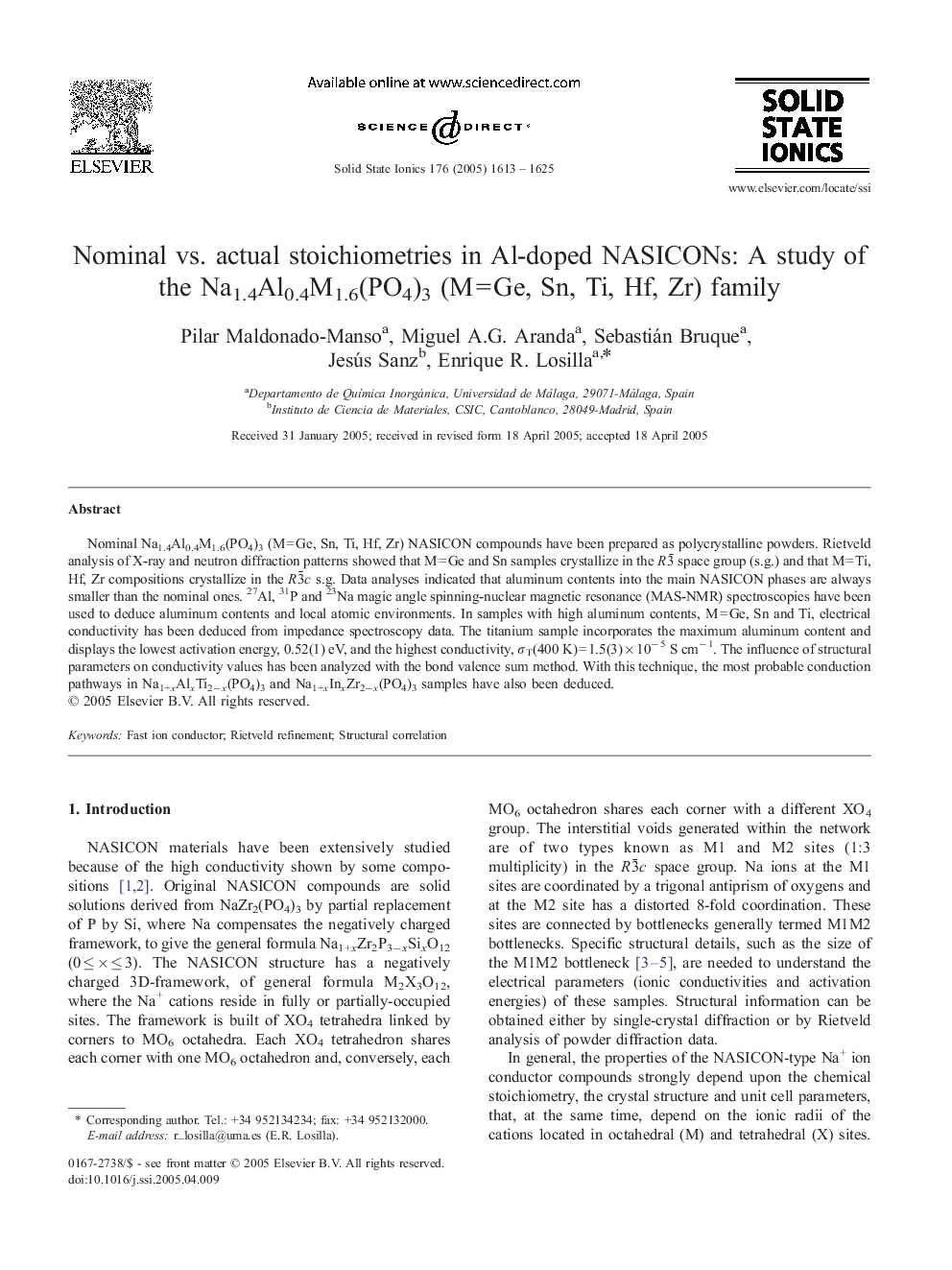| Article ID | Journal | Published Year | Pages | File Type |
|---|---|---|---|---|
| 9761616 | Solid State Ionics | 2005 | 13 Pages |
Abstract
Nominal Na1.4Al0.4M1.6(PO4)3 (M = Ge, Sn, Ti, Hf, Zr) NASICON compounds have been prepared as polycrystalline powders. Rietveld analysis of X-ray and neutron diffraction patterns showed that M = Ge and Sn samples crystallize in the R3¯ space group (s.g.) and that M = Ti, Hf, Zr compositions crystallize in the R3¯c s.g. Data analyses indicated that aluminum contents into the main NASICON phases are always smaller than the nominal ones. 27Al, 31P and 23Na magic angle spinning-nuclear magnetic resonance (MAS-NMR) spectroscopies have been used to deduce aluminum contents and local atomic environments. In samples with high aluminum contents, M = Ge, Sn and Ti, electrical conductivity has been deduced from impedance spectroscopy data. The titanium sample incorporates the maximum aluminum content and displays the lowest activation energy, 0.52(1) eV, and the highest conductivity, ÏT(400 K) = 1.5(3) Ã 10â 5 S cmâ 1. The influence of structural parameters on conductivity values has been analyzed with the bond valence sum method. With this technique, the most probable conduction pathways in Na1+xAlxTi2âx(PO4)3 and Na1+xInxZr2âx(PO4)3 samples have also been deduced.
Related Topics
Physical Sciences and Engineering
Chemistry
Electrochemistry
Authors
Pilar Maldonado-Manso, Miguel A.G. Aranda, Sebastián Bruque, Jesús Sanz, Enrique R. Losilla,
